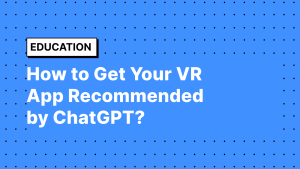Virtual Reality Is the Future of Career Education
Education | May 2, 2015
Every so often, a new way emerges. A way for society to perform critical tasks in ways completely discontinuous from the trends and ways of doing things that came before. There was a time when schooling itself was an amazing innovation. Now, it is expected, and granted as a right. The new way needed is one that helps us use technology in a way that scales amazing teaching and learning experiences. Experiences that heighten learning and enrich lives, and are delivered in efficient and cost effective ways.
But I am not convinced most schools see it that way. We are in the midst of a sea change in higher education. At the top of the market, the rich get richer. The best students flow to the best schools and private endowments continue to grow. Meanwhile, thousands of schools struggle to find a way to do more with less. The only thing that has seemingly grown for them in the last 5 years is competition and regulation. Hardly a comforting mix.
It is in times like this that I encourage leaders across the education spectrum to repeat and believe one simple phrase, “there is a better way”.
As a society, we are at the dawn of new technology, and real exponential advancement. The race in higher education should be to understand how best to deploy it as fast as possible. The exciting part is that the future will offer meaningful chances to improve teaching and learning. Most of what has happened in higher education with respect to technology in the last decade has merely increased access. We put traditional courses online and patted ourselves on the back. Viewed linearly through the lens of history, this was a critical first step, but the journey is far from complete. We have merely taken baby steps.
Instead of stopping there and spending time trying to realize the available efficiency offered by the current high tech paradigm, we should view our roles as pushing ahead to take the next step. Online courses are not the end. Rather, getting students online at scale is simply the end of the beginning. This is where it gets interesting. How can we simulate an operating room in a classroom and offer different scenarios in real time in an intense way? Can we offer business instruction complete with 1,000 unique simulations to 1,000 different people across the world at once in a way that gives them an enriching and deep experience? The people who will be really valuable in the future are asking those questions now. The people who will be really, really valuable are working to answer them.
So what is next? A lot. If you missed the opportunity at the time but want to know what it was like to be into the web, or mobile, or social before everyone else years ago, you now have another chance. Virtual Reality will be omnipresent and ubiquitous in 5 years. It is hard to find now. It is completely missing in education. The question is, who will take a leadership role and fill the gap? Why not you?
If you don’t know what your opportunity with virtual reality is, I promise you will be surrounded by it eventually. It’s probably wise to start thinking about it now.
You might think, I really don’t know much about virtual reality, or how to apply it to higher education. That’s the beautiful part. No one does. But someone will. Smart people see those horizons and fill gaps.
I am headed there, and I invite you to join me. Better yet, race me. Its time to think big thoughts and get started.
Subscribe to our newsletter
We write about the use of Virtual Reality for non-gaming applications.










